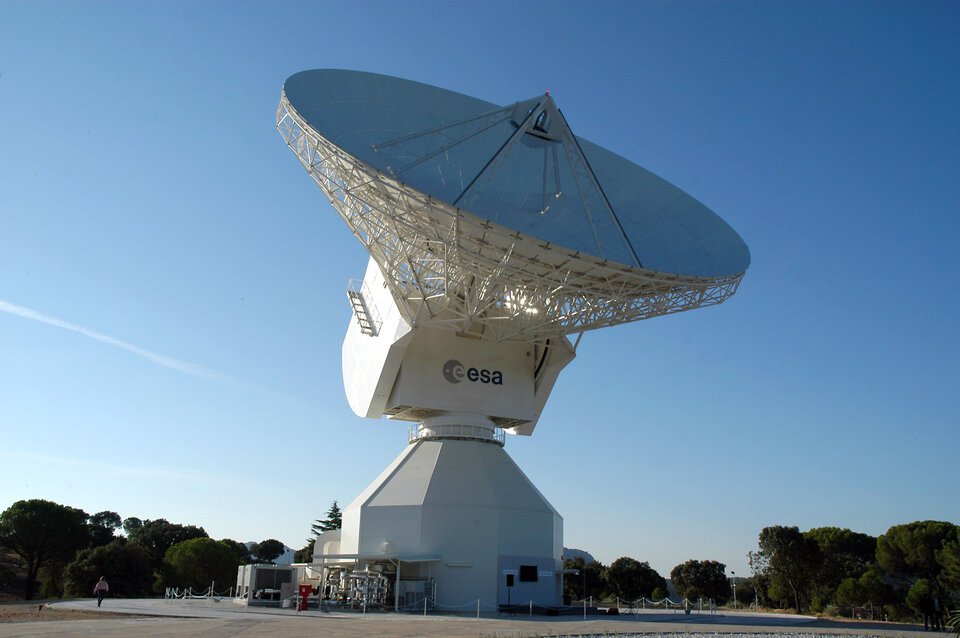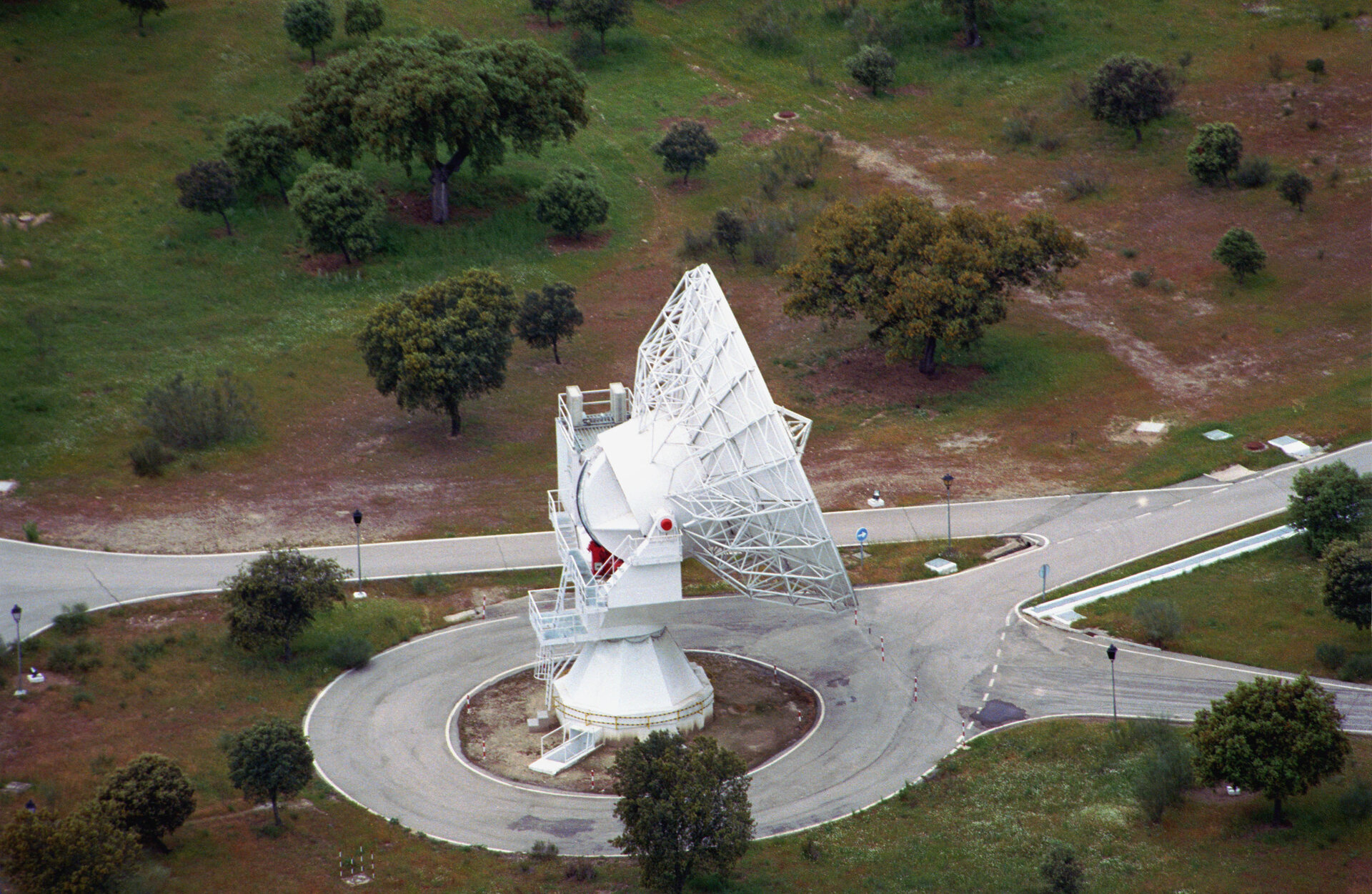The Operations, communicating with space
Satellites stay in contact with Earth by means of a ground-station network. Engineers send commands to correct their trajectories, manoeuvre them into different orbits, and operate their instruments. The satellite transmits back to Earth not only the scientific data that it is gathering, but also the ‘housekeeping’ information needed by the operators to check the satellite’s performance.
The scientific data from all astronomy and Solar System missions arrive from the ESA’s European Space Operations Centre (ESOC) in Darmstadt, near Frankfurt, Germany. ESAC has a number of antennas with modern electronic telemetry, telecommand and ranging equipment that allows commands to be sent to control the satellites and their payloads, as well as the scientific data to be received on the ground. The ESAC antennas currently support Cluster, ESA’s four-satellite flotilla in studying Earth’s magnetic field, together with Integral and XMM-Newton, Metop-A, as well as the ATV and the International Space Station.
Cebreros Deep-Space Antenna

ESA’s next generation of astronomy and Solar System missions is highly ambitious. Designed to open up new frontiers in space exploration, many of them will be placed very far away in space, not even orbiting Earth. To communicate with these deep-space missions, ESA is building-up a new network of deep-space antennas.
The powerful new 35-metre antenna at Cebreros in Ávila, Spain, is currently one of two ESA deep-space ground stations, the other being at New Norcia in Australia. Cebreros provides routine operations support to Venus Express, Herschel and Planck and back-up support to Mars Express and Rosetta, as well as other agencies’ missions. Other interplanetary missions will follow, including BepiColombo.
Three decades of reaching into space

ESAC was founded in 2004 on the Villafranca site, which officially opened in 1978 as VILSPA (from VILlafranca SPAin), one of ESA’s original satellite tracking stations. VILSPA, operated remotely from the European Space Operations Centre (ESOC) in Darmstadt, Germany, has been responsible for providing telemetry, tracking and command support to ESA as well as non-ESA satellites(in chronological order): the International Ultraviolet Explorer (IUE), OTS-2, GOES, Marecs-A, EXOSAT, ECS-1, Marecs-B2, ECS-2, ECS-4, ECS-5, Meteosat-1, Olympus, Hipparcos, Giotto, Italsat-1, ERS-1, Meteosat-2, Meteosat-3, the Infared Space Observatory (ISO), ERS-2, Italsat-2, SOHO, XMM-Newton, Cluster II flotilla (Cluster I, II, II y IV), Eutelsat-W3, Envisat, Eumetsat MSG-1, Integral, SMART-1, TC-1, BIRD, TC-2, Eumetsat MSG-2 and Metop-A.
The station has also hosted the Science Operations Centres of IUE – which operated for more than 17 years and is still one of the most prolific astronomical satellites ever launched – and ISO, the world’s first true orbiting infrared observatory, which made more than 30 000 scientific observations.




